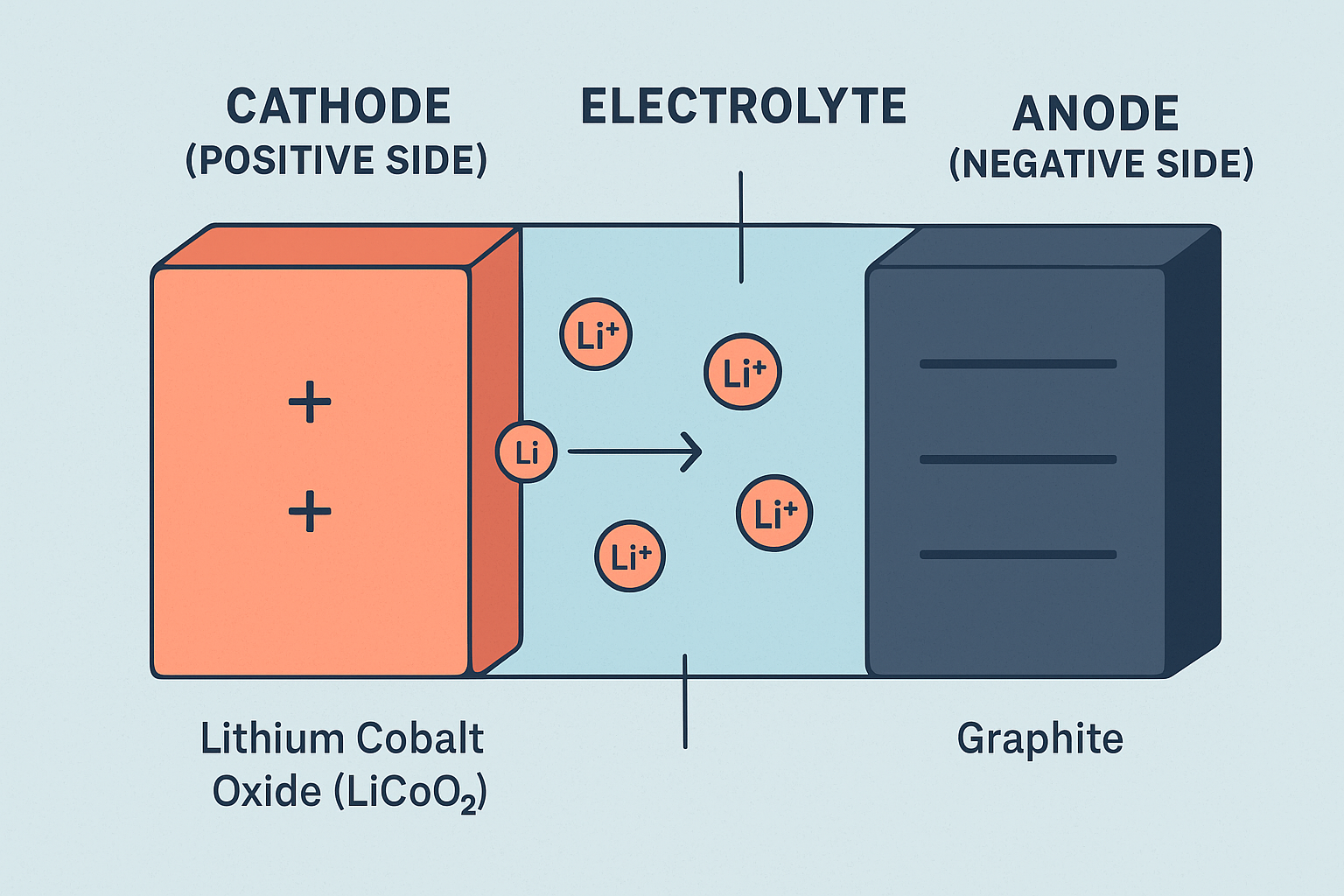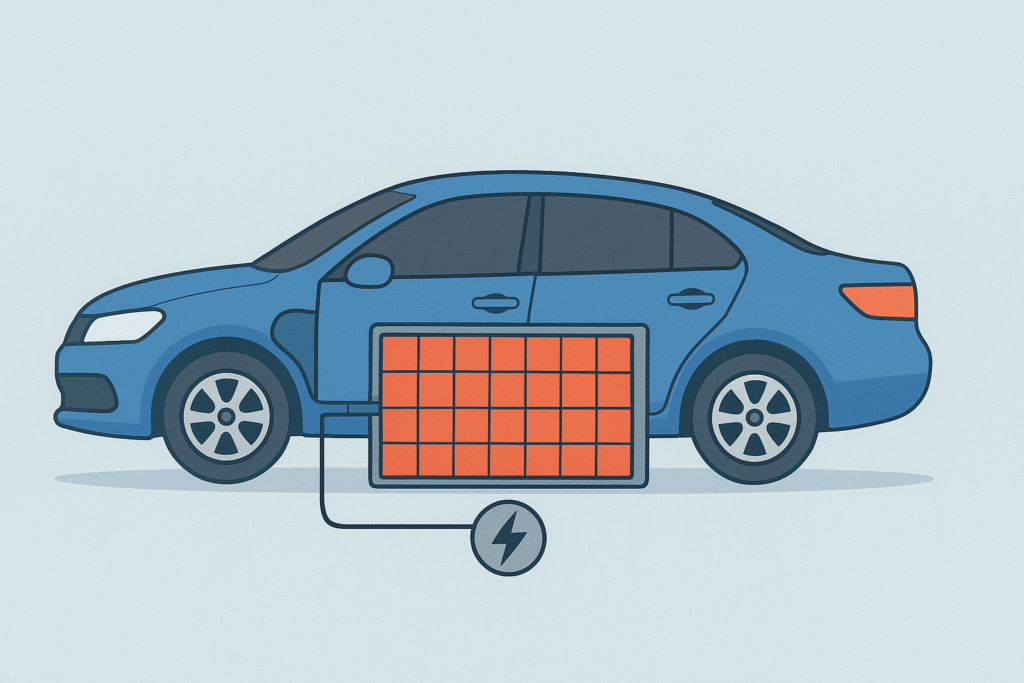Lithium-Ion Battery
A lithium-ion battery is a rechargeable battery where lithium ions move between the positive (cathode) and negative (anode) electrodes during charging and discharging.
Cathode (positive side): Made from lithium metal oxides like Lithium Cobalt Oxide (LiCoO₂) or Lithium Iron Phosphate (LiFePO₄).
Anode (negative side): Usually made from graphite.
Electrolyte: A liquid or gel solution that allows lithium ions to move.
Separator: A thin layer that prevents short circuits.
👉 When charging: Lithium ions move from cathode → anode.
👉 When discharging: Lithium ions move from anode → cathode, powering the motor.

Why Lithium-Ion Batteries are Used in EVs
Almost all EV makers (Tesla, BYD, Tata, Hyundai, Ola, Ather) use Li-ion batteries because:
High Energy Density – They store more power in less space, giving EVs longer range.
Lightweight – Much lighter compared to lead-acid or nickel batteries.
Fast Charging – Can be charged quickly with DC fast chargers.
Long Lifespan – Lasts 8–10 years or more with proper care.
Low Self-Discharge – They hold charge for longer periods when not in use.
That’s why Li-ion batteries are the standard choice for EV cars and bikes worldwide.
Uses of Lithium-Ion Batteries
Electric Cars & Bikes – Main power source.
Mobile Phones & Laptops – Everyday gadgets.
Power Storage Systems – Solar and wind energy storage.
Medical Devices – Pacemakers, portable machines.
Electric Tools – Drills, trimmers, and other cordless tools.
Battery Replacement in EVs
Like any component, EV batteries have a life cycle.
Average Lifespan: 1,500 – 2,000 charge cycles (about 8–10 years for cars).
Cost of Replacement (India, 2025):
EV bikes/scooters: ₹70,000 – ₹1,20,000
EV cars: ₹3 lakh – ₹7 lakh (depending on battery size)
Most companies offer 8 years / 1,60,000 km warranty on batteries.
👉 Future: Battery swapping and second-life batteries are becoming popular to reduce replacement cost.

Lithium-ion batteries are the backbone of electric vehicles. Their lightweight design, high energy density, and fast charging ability make them perfect for EVs. While replacement is still costly, technology is improving and prices are falling every year.

